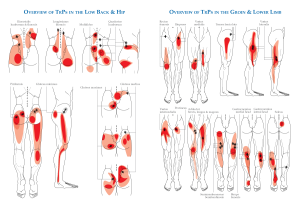Spinal Flexion: What Is it?

Spinal flexion is one of the fundamental movements of the spine. It may be an unfamiliar term, but we perform this movement daily when simply sitting down or tying our shoes.
Spinal flexion refers to bending or curving the spine forward. Flexion allows forward motion that involves rounding the back. The spine can also extend in the opposite direction. When it does, the spine is straightened or arched.
Why Is Spinal Flexion Important?
Spinal flexion is necessary for everyday movements. During activities, it allows for an even distribution of forces along the spine. The ability of the spine to flex enhances overall mobility and range of motion of the back and prevents stiffness or rigidity in the spine.
Spinal Flexion Back Pain
You may be experiencing low back pain that worsens when you bend forward. This type of pain is known as flexion-intolerant low back pain — when bending or curling forward increases your discomfort. Bending could even be causing pain that radiates into your buttock or down one leg, which is similar to sciatica.
Flexion pain often becomes more noticeable with activities that involve repetitive bending. It can also result from staying in the same bent position for too long. Conditions that lend themselves to flexion pain include:
Signs that you might have flexion-intolerant low back pain are:
- Waking up in the morning with back pain
- Bending over to do things, like tying your shoes, hurts
- Hurting your back suddenly while bending down
- Pain when standing up after sitting in your car or a chair for a while
- Doing stretches or exercises that extend or arch your back brings some relief
A noticeable lack of spine flexibility can make it hard to perform daily activities over time. Other muscles may begin to overcompensate, leading to increased pain, fatigue, and postural changes.
Spinal Flexion Pain Relief
Here are some ways to get short-term relief:
- Medication, such as over-the-counter NSAIDS like ibuprofen and naproxen, can help with temporary pain.
- Gentle stretching can enhance flexibility in all directions the spine can move, relieving tension and nerve compression.
- Alternating heat and cold applications can reduce inflammation and alleviate pain.
- Maintaining a good posture while sitting and using a small back support for additional comfort may help. It’s best to avoid sitting on surfaces that are too low. Instead of remaining seated for extended periods, make sure to stand up and walk around for a bit every 30 minutes.
Long-term, other interventions may be needed to provide lasting relief, including physical therapy.
If your flexion pain is caused by a herniated disc, seeing a doctor for evaluation and treatment can aid in the recovery process and prevent further disc damage.
will improve posture and provide support and stability to the spine. Improving spinal flexion involves a combination of stretching, strengthening, and flexibility exercises. Practices such as yoga and Pilates, focusing on controlled movements, can be especially helpful. Working with a physical therapist or a qualified instructor can ensure you perform these movements correctly and safely.
Get Expert Care for Spinal Flexion Limitations
If you are experiencing any discomfort or limitations in movement, our physiatrists and neurosurgeons can offer you the guidance and support you need to improve your spinal health.
Stop letting challenges in spinal flexion limit your life – today!
Related:




